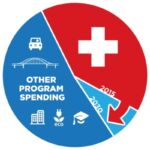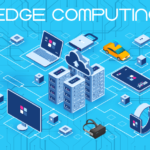The Real Time Location System (RTLS) are described as systems that detect and track the geographical position of objects and individuals in real-time. These systems operate based on a tag that is attached to the respective entity and location can be analyzed accurately via the signals emitted from these tags. According to the market database, these systems are versatile and used in different industry verticals for various applications. The competitive mapping across this market can be studied using market research tools like Global Market Database.
Market database states that realtime location systems are widely used for inventory/asset tracking, staff monitoring, access control, environment monitoring, fleet management, supply chain management, and operational automation. These systems are prominent as they avoid mismanagement, provide operational efficiency, improved quality, and cost & time reduction according to market research tools.
Market research states that the systems a fusion of hardware and software capabilities to provide improved performance. The hardware vertical is heavily dependent on the sensor quality to track the signals even in harsh environmental conditions as per market research tools. Software abilities include the signal and information processing capacity. Modern RTLS is equipped with advanced analytical abilities to provide useful insights and drive business decisions.
Analysis of UWB and RFID:
Market Database suggests that Real Time Location Systems are integrated with various technologies which are dependent on the radius of application and industry vertical. According to market research tools, based on the technology the RTLS systems market is divided as Radio Frequency Identification (RFID), Wi-Fi, Ultra-Wideband (UWB), Bluetooth Low Energy (BLE), Ultrasound, Infrared (IR), Global Positioning Systems (GPS), and others. The prominent growth segments across the global market can be studied using platforms like Global Market Database. The cloud based market research tool studies 600+ markets across 12 industries.
Market research tools state that ultra-wideband is a short-range wireless communication protocol that is operated on radio waves. According to market database, this type of technology has experienced a greater share in the market as it operates at very high frequencies. Market research states that this has provided a dual advantage of improved accuracy and lower power consumption. Ultra-wideband is also prominent in the healthcare industry for different applications. Such factors have contributed towards a positive business outlook for this type of technology.
Market research tools state that Radio Frequency Identification (RFID) is described as a method of data collection that involves the automatic identification of objects via low-frequency radio waves. According to market database, the architecture of an RFID is made up of a tag, reader, and an antenna to send and receive the required signals. Innovation in RFID technology has contributed significantly towards the development of the RTLS market in different regions.
A spectrum of Technologies:
Market research suggests that the remaining type of technologies are highly application-specific and, in some cases, range-bound as well. Wi-Fi-enabled RTLS make use of dedicated tags to transmit the signal to multiple access points throughout the building. According to market database, such type of RTLS is beneficial for indoor tracking environments. Bluetooth Low Energy (BLE) operates in the same 2.4 GHz radio frequency as traditional Bluetooth. The only difference being, they require less power to carry out the overall operations. BLE tags are small devices that work by sending out a signal that can be picked up by other Bluetooth-enabled devices (readers) to calculate the distance. The market penetration rate associated with these technologies can also be studied through Global Market Database. The market research platform maps the overall business outlook and business recovery for the Real time location systems.
Market research tools state that the ultrasound RTLS is also termed an indoor positioning system (IPS). According to market database, these systems can identify the location of objects with in-room accuracy and they do not interfere with the signals of other working machinery. An infrared RTLS makes use of an infrared tag that can be a remote placed on an asset. This remote is programmed to flash at regular intervals of times which can be detected by the infrared receiver.
Growth Elements in Real Time Location Systems:
Market research tools state that the greater acceptance of these systems in different industry verticals has led to a positive business outlook. COVID-19 impacted the overall market as many industry clients had to halt the operations due to the restrictions imposed by the lockdowns. COVID-19 and scenario analysis based on the same can also be performed via market research tools like Global Market Database. Customized business recovery solutions can be provided by this cloud based market intelligence tool.
A disruption in the manufacturing process was also witnessed as there was a shortage of hardware components. According to market database, a sharp bounce-back was observed in the market as the business activities started to resume in different parts of the world. The healthcare module has made use of RFID tags for vaccine shipment tracking and equipment tracking to provide operational efficiency. As major industries shifted to digital solutions such as digital supply chains to drive business recovery witnessed increased adoption of RTLS.
Market database suggests that the onset of 5G and increased penetration of IoT-enabled devices is expected to improve the overall accuracy of these systems along with better processing speeds. Such a mix of factors has contributed towards an optimistic business outlook for RTLS. The proliferation of smartphones and other smart gadgets has improved the location tracking abilities for various business objectives. Furthermore, market research tools suggest that the innovation in hardware components and software abilities such as integration of business analytics solutions have sustained the growth in this market.
Applications in Healthcare:
Market database suggests that the RTLS have witnessed applications in different industry verticals such as Healthcare, manufacturing, retail, transportation & logistics, government & defense, education, oil & gas mining, sports, entertainment, and others. Out of all the verticals, the healthcare module has experienced a greater share in the applications of RTLS. Recent use cases are observed in cases of vaccine shipment tracking, vaccine administration, and contact tracing according to market research tools.
Market database states that major market players have started to deploy contact tracing solutions related to business environments. These solutions are expected to drive awareness among the employees and improve productivity. The drivers’ restraints and challenges for this market can be studied using Global Market Database. The market intelligence platform caters to providing relevant market information.
For instance, a major player in the U.S, in May 2020, launched a new enterprise contact-tracing solution to protect the workers. Market analysis states that further applications are observed in terms of patient tracking in hospitals, geofencing for asset tracking to avoid theft, workflow tracking to avoid any operational bottlenecks and drive down costs.
The U.S Market Perspective:
Market research tools state that the region has commanded a greater share in the RTLS market. As the country experienced the highest number of COVID-19 cases in the world, higher demand from the healthcare module has pushed the use cases for RTLS. Furthermore, the combination of technological advancements and enhanced research capacity offered by the country has contributed towards an optimistic business outlook and is expected to drive business recovery for different industry verticals.
Market database suggests that the major player in the U.S, in Feb 2020, introduced a new RTLS that was designed for enterprise-grade deployments. The system offered improved receiver sensitivity, faster network connectivity, and powerful processing for next-generation IoT solutions. Increased deployment of RTLS in this region was also observed for different verticals such as aerospace and defense.


